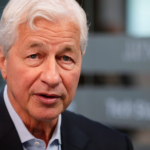Introduction: The Russian rouble exhibits resilience, gaining strength and nearing a five-month high, supported by a confluence of factors such as month-end tax payments, exporters’ currency sales, and elevated interest rates. This article delves into the dynamics influencing the rouble’s performance.
1. Rouble’s Ascendancy:
- The Russian rouble strengthened by 0.4% against the dollar, approaching levels not seen since June 30.
- Month-end tax payments and exporters’ mandatory foreign currency conversions contribute to the currency’s robust performance.

2. Tax Period Impact:
- Month-end tax payments prompt exporters to convert foreign currency into roubles, potentially pushing the rouble to 85 against the dollar.
- Alor Broker’s Alexei Antonov highlights the significance of trading dynamics during this period in gauging future currency market sentiments.
3. Weekly Gains and Presidential Decree Effect:
- The rouble is poised for a seventh consecutive weekly gain against the dollar.
- The currency has strengthened since a presidential decree mandated certain exporters to convert a significant portion of foreign exchange revenue.
4. Factors Influencing Rouble’s Recovery:
- Kremlin aide Maxim Oreshkin attributes the rouble’s recovery to reduced capital outflows and a stabilizing balance of payments.
- Strong consumer demand may impose constraints on further rouble appreciation.
5. Bank of Russia’s Role:
- The Bank of Russia’s interest rate hike to 15% in late October has provided support to the rouble.
- Speculation arises about the possibility of another rate increase, although analysts suggest the rate hike cycle may be nearing completion.
6. Oil Prices and Market Impact:
- Brent crude oil, a key export for Russia, experienced a 1.1% decline to $81.10 per barrel.
- OPEC+ delays in deciding on oil output cuts contributed to oil price fluctuations, impacting Russia’s export revenues.
7. Stock Market Performance:
- Russian stock indexes witnessed positive movements.
- The dollar-denominated RTS index rose by 0.4%, while the rouble-based MOEX Russian index recorded a 0.1% increase.
Conclusion: The Russian rouble’s strength, influenced by various economic factors, reflects its resilience in the face of global economic dynamics. As the currency navigates through tax periods, interest rate policies, and global oil market uncertainties, its trajectory remains a focal point for investors and market analysts alike.









